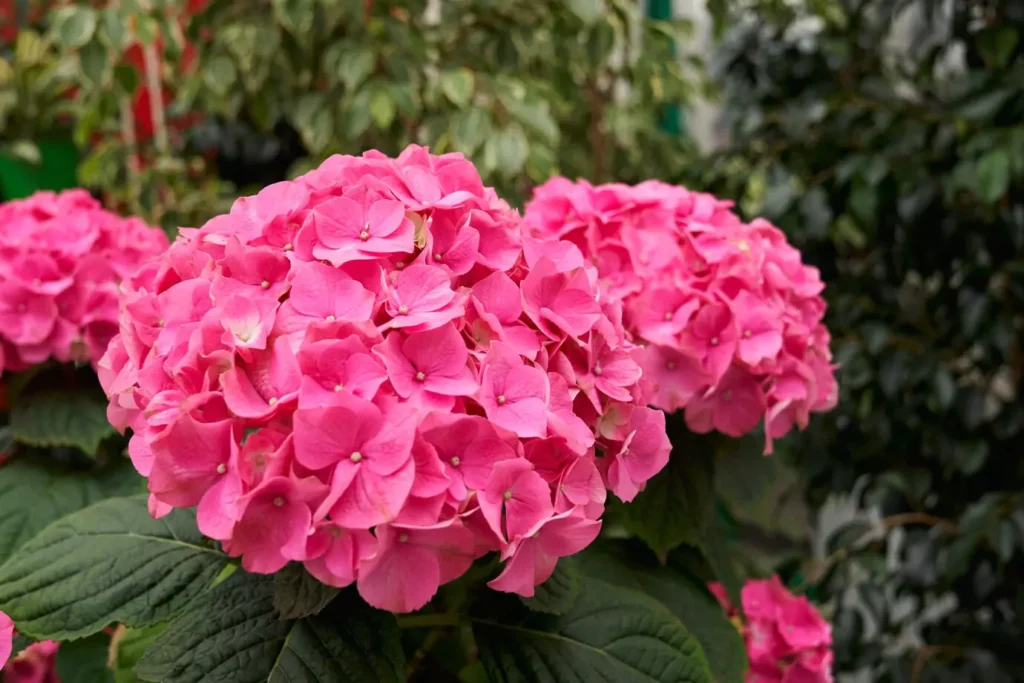When it comes to adding beauty and charm to your landscape, hydrangeas are a popular choice among garden enthusiasts. However, the success of hydrangea cultivation depends significantly on selecting the right location. This article will explore the considerations for planting hydrangeas and guide you through the process of choosing the perfect side of the house to ensure your hydrangeas thrive.

Understanding Hydrangeas: A Garden Favorite
1. Varieties of Hydrangeas:
Before delving into the ideal planting location, it’s essential to understand the different varieties of hydrangeas. Common types include mophead hydrangeas, lacecap hydrangeas, panicle hydrangeas, and smooth hydrangeas. Each variety has unique characteristics, such as flower shape, size, and color.
2. Soil and Sun Preferences:
Hydrangeas generally prefer well-draining soil that is rich in organic matter. While they thrive in various sunlight conditions, the specific requirements can vary among hydrangea varieties. Some prefer partial shade, while others do well in full sun. Understanding the sunlight preferences of your chosen hydrangea type is crucial for successful cultivation.
Choosing the Right Side of the House: Factors to Consider
1. Sun Exposure:
a. North and East-Facing Sides:
- These sides typically receive morning sunlight and are considered ideal for hydrangeas that prefer partial shade.
- Mophead and lacecap hydrangeas often thrive on the north or east side, where they receive gentler morning light.
b. South and West-Facing Sides:
- These sides receive more intense afternoon sunlight, making them suitable for hydrangea varieties that can tolerate full sun.
- Panicle hydrangeas, for example, can flourish on the south or west side of the house.
2. Microclimates:
a. Shaded Microclimates:
- Consider any existing microclimates on the sides of your house, such as areas shaded by trees or adjacent structures.
- Some hydrangea varieties, like smooth hydrangeas, may thrive in these shadier microclimates.
b. Wind Exposure:
- Evaluate the wind exposure on different sides of the house. While hydrangeas appreciate good air circulation, excessive wind can lead to moisture loss.
- Planting hydrangeas on the leeward side (sheltered from prevailing winds) can protect them from drying winds.
3. Soil Conditions:
a. Acidic or Alkaline Soil:
- Hydrangea flower color can be influenced by soil pH. Acidic soil tends to produce blue flowers, while alkaline soil results in pink flowers.
- Test the soil on each side of the house to determine its pH and choose hydrangea varieties that align with your desired flower color.
b. Moisture Levels:
- Hydrangeas require consistent moisture, and the soil on the chosen side should allow for proper drainage.
- Avoid waterlogged areas, as excessive moisture can lead to root rot.
4. Aesthetic Considerations:
a. Landscape Design:
- Consider the overall landscape design and how hydrangeas will complement other plants and elements in your garden.
- Hydrangeas can be used as focal points, border plants, or hedges, enhancing the visual appeal of your outdoor space.
b. Curb Appeal:
- Plant hydrangeas strategically to enhance the curb appeal of your home. Their lush blooms and vibrant colors can contribute to a welcoming and aesthetically pleasing exterior.
Planting and Caring for Hydrangeas: Best Practices
1. Planting Guidelines:
a. Digging the Hole:
- Dig a hole that is twice the width of the hydrangea’s root ball but only as deep as the root ball.
- Ensure proper spacing between multiple hydrangea plants.
b. Amending the Soil:
- Incorporate organic matter into the soil to enhance its fertility and drainage capabilities.
- Mulch around the base of the hydrangea to retain moisture and suppress weeds.
2. Watering and Feeding:
a. Regular Watering:
- Hydrangeas benefit from regular watering, especially during dry periods.
- Water deeply to encourage a robust root system.
b. Fertilization:
- Apply a balanced fertilizer in spring to promote healthy growth and abundant blooms.
- Follow specific fertilization guidelines based on the hydrangea variety.
3. Pruning Strategies:
a. Understanding Pruning Needs:
- Different hydrangea varieties have varying pruning requirements.
- Mophead and lacecap hydrangeas bloom on old wood, while panicle hydrangeas bloom on new wood.
b. Timing of Pruning:
- Prune mophead and lacecap hydrangeas after they bloom in late summer or early fall.
- Prune panicle hydrangeas in late winter or early spring before new growth begins.
Conclusion: Cultivating Hydrangea Bliss on the Perfect Side
Choosing the perfect side of the house to plant hydrangeas involves a thoughtful consideration of sunlight, soil conditions, and aesthetic preferences. By understanding the specific needs of your chosen hydrangea varieties and assessing the environmental factors on each side of your home, you can create an optimal environment for these beloved flowering shrubs. With proper planting and care, your hydrangeas can flourish, adding beauty and vibrancy to your outdoor space for years to come.
Also read: How to Get Your House Rewired for Free: Free Upgrades
